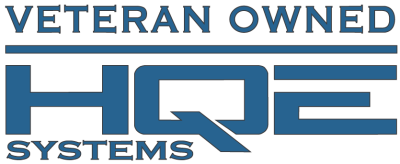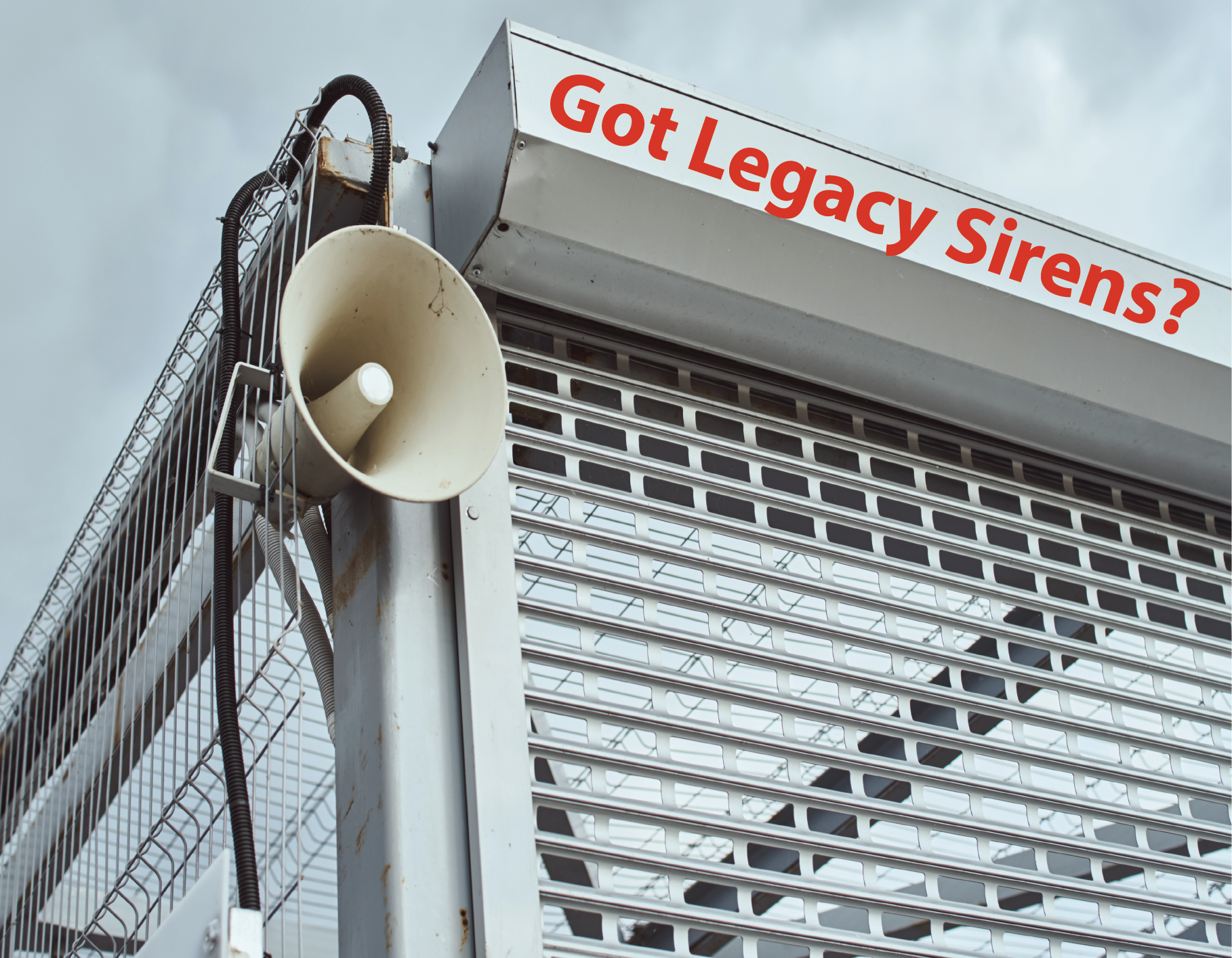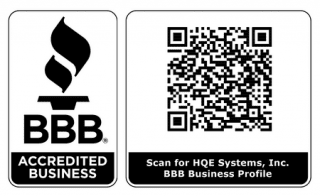Fund Your Outdoor Warning Sirens Projects
Summary of FEMA Hazard Mitigation Assistance (HMA) Programs
![]()
FEMA Hazard Mitigation Assistance (HMA) programs provide funding for eligible activities that reduce or eliminate long-term risk to people and property from future disasters. These activities are referred to as hazard mitigation. States, local, tribal and territorial (SLTT) governments may apply for this funding to support them build climate resilience.
FEMA is committed to ensuring equitable access to its HMA programs, which includes reducing barriers to funding and providing focused assistance to underserved communities.
Program Summaries
Building Resilient Infrastructure and Communities
FEMA’s Building Resilient Infrastructure and Communities (BRIC) competitive annual grant program supports SLTTs as they implement hazard mitigation projects to reduce the risks from disasters and natural hazards. The program is authorized by the Section 203 of the Robert T. Stafford Disaster Relief and Emergency Assistance Act (Stafford Act),
The BRIC program aims to categorically shift the federal focus away from reactive disaster spending and toward proactive investment in community resilience. FEMA funds BRIC with a 6% set-aside from federal post- disaster grant funds, such as Public Assistance and Individual Assistance grants. As a competitive grant program, applicants can apply on a yearly basis.
FEMA’s priorities for the FY 2022 BRIC program are to:
- Incentivize natural hazard risk reduction activities that mitigate risk to public infrastructure and disadvantaged communities as referenced in Executive Order 14008 – Tackling the Climate Crisis at Home and Abroad;
- Incorporate nature-based solutions, including those designed to reduce carbon emissions;
- Enhance climate resilience and adaptation;
- Increase funding for the adoption and enforcement of the latest published editions of building codes; and
- Encourage mitigation projects that meet multiple program priorities.
Through BRIC, FEMA continues to invest in a variety of mitigation activities with an added focus on infrastructure projects benefitting disadvantaged communities, nature based solutions, climate resilience and adaptation, and adopting hazard resistant building codes.
Management costs allow FEMA to provide financial assistance to reimburse the recipient and subrecipient for eligible and reasonable indirect costs, direct administrative costs, and other administrative expenses associated with a specific mitigation project or Capacity and Capability-Building (C&CB) activity. Management Costs can be submitted under the State/Territory Allocation, Tribal Set-Aside, and national competition.
The BRIC Program also offers non-financial Direct Technical Assistance (DTA) and encourages communities to participate. BRIC DTA gives full support to communities that may not have the resources to begin climate resilience planning and project solution design on their own. FEMA will give wide-ranging support to BRIC DTA communities including climate risk assessments, community engagement, partnership building, mitigation and climate adaptation planning, and BRIC program requests throughout the grant lifecycle.
Flood Mitigation Assistance Program
Flood Mitigation Assistance (FMA) grants provide funding to states, local communities, tribes and territories to reduce or eliminate the risk of repetitive flood damage to buildings insured under the National Flood Insurance Program (NFIP). The program is authorized by Section 1366 of the National Flood Insurance Act.
FEMA’s priorities for the FY 2022 FMA program are to: 1) Align with BRIC’s C&CB and increasing the amount of eligible FMA program C&CB activities; 2) Increase funding caps and enhance federal cost share funding that impacts socially vulnerable communities with Severe Repetitive Loss (SRL) and Repetitive Loss (RL) properties; 3) Increase final priority scoring points for socially vulnerable communities; and 4) Expand access to Benefit-Cost Analysis (BCA) waivers.
FEMA distributes funds annually to develop community or individual flood mitigation projects. These grants address community flood risk for the purpose of reducing National Flood Insurance Program flood claim payments and to mitigate the risk of flooding to individual flood insured structures. In addition, funding is also used for technical assistance and management costs.
As a requirement of the FMA program, all subapplicants must be participating and in good standing with the NFIP.
Hazard Mitigation Grant Program
The Hazard Mitigation Grant Program (HMGP) provides funding to SLTT governments so they can rebuild in a way that reduces, or mitigates, future natural disaster losses in their communities. The program is authorized by Section 404 of the Stafford Act.
HMGP funding is authorized with a Presidential Major Disaster Declaration. A governor or tribal chief executive may request HMGP funding throughout the state, tribe or territory when submitting a disaster declaration. The amount of funding made available to the applicant is based on the estimated total Federal assistance. The formula generally gives 15% of the total federal assistance amount provided for recovery from the presidentially declared disaster and is determined by the FEMA-approved Hazard Mitigation Plan.
Through HMGP, FEMA allows states to access up to 10% and local governments up to 5% of their HMGP award for management and administration costs, there is a lot of opportunity to access funding for mitigation planning and management. Management costs are any indirect costs and administrative expenses that are reasonably incurred by a Grantee or subgrantee in administering a grant or subgrant award.
Hazard Mitigation Grant Program Post Fire
The HMGP Post Fire program provides funding to help communities implement hazard mitigation measures focused on reducing the risk of harm from wildfire. HMGP Post Fire funding is authorized under Sections 404 and 420 of the Stafford Act, and provides hazard mitigation grant funding to SLTT governments in areas receiving a Fire Management Assistance Grant (FMAG) declaration.
A Presidential Disaster Declaration is not required to activate funding. The funding amounts are determined by FEMA and are based on a national aggregate calculation of the historical expenditures for FMAG declarations from the past 10 years. This amount is recalculated at the beginning of each fiscal year (October 1-September 30). HMGP Post Fire awards are provided for each FMAG declaration but are aggregated under one award for each Recipient for the fiscal year to lessen the administrative burden and provide all available funding for that fiscal year under one award.
Pre-Disaster Mitigation Program
The Pre-Disaster Mitigation (PDM) program makes federal funds available to state, local, tribal and territorial governments to plan for and implement sustainable cost-effective measures designed to reduce the risk to individuals and property from future natural hazards, while also reducing reliance on federal funding from future disasters. This funding is offered in addition to funds provided through other FEMA grant programs for projects that will support growing mitigation needs nationwide.
On Dec. 29, 2022, President Joseph R. Biden signed into law the Consolidated Appropriations Act of 2023, making $233 million available to 100 selected community and Tribal Nation resilience projects that support growing mitigation needs nationwide. For additional information, visit Grants.gov to review the Fiscal Year 2023 funding notice.
Safeguarding Tomorrow Revolving Loan Fund Program
The Safeguarding Tomorrow through Ongoing Risk Mitigation (STORM) Act became law on Jan. 1, 2021 and authorizes FEMA to provide capitalization grants to states, eligible federally recognized tribes, territories and the District of Columbia to establish revolving loan funds that provide hazard mitigation assistance for local governments to reduce risks from natural hazards and disasters. The STORM Act amends the Stafford Act.
FEMA’s priorities for the Safeguarding Tomorrow Revolving Loan Fund (RLF) program are to:
- Empower eligible entities;
- Create innovative funding solutions;
- Deliver equitable investments and increased access;
- Reduce grant application complexity;
- Maximize administrative flexibility.
FEMA’s Safeguarding Tomorrow RLF program is the first HMA program to provide capitalization grants to eligible state, territorial, and tribal governments for revolving loan funds. Awarded grant funding will be used by an applicant to administer its revolving loan fund and provide direct loans to local governments based on its unique mitigation needs and priorities.
Hazard Mitigation Assistance
A Common Goal
The shared goal of all FEMA HMA programs is to reduce the loss of life and property due to natural hazards.
General Requirements
All mitigation projects must be cost-effective, technically feasible and effective, and compliant with the National Environmental Policy Act (NEPA) and any other applicable requirements outlined in federal, state, territorial, federally recognized tribal and local laws.
Additionally, all applicants and subapplicants must have a FEMA-approved Hazard Mitigation Plan.
Program Comparisons for Cost Share
Through its grant programs, FEMA typically funds the federal cost share for 75% of eligible activity costs. In certain cases, FEMA may provide up to 90 or 100%. Refer to Table 1 for additional information. Applicants and subapplicants must pay for the remaining 25%, non-federal costs share, of eligible activity costs with non-FEMA sources.
In general, the non-federal cost share requirement may not be met with assistance from other federal agencies. However, exceptions include funding from the U.S. Department of Housing and Urban Development’s Community Development Block Grants funds. Federal assistance that is used to meet a non- federal cost share requirement must meet the eligibility and compliance requirements of both federal source programs.
The table below outlines the federal and non-federal cost-share requirements.
TABLE 1: COST SHARE REQUIREMENTS
| Program | Mitigation Award Activity (percent of federal/non-federal cost share) |
| Hazard Mitigation Grant Program | 75/25 |
| Hazard Mitigation Grant Program Post Fire | 75/25 |
| Building Resilient Infrastructure and Communities | 75/25 |
| Building Resilient Infrastructure and Communities Economically Disadvantaged Rural Communities | up to 90/10 |
| Flood Mitigation Assistance(Localized Flood Risk Reduction, Project Scoping, individual mitigation of insured properties, and planning grants) | 75/25 |
| Flood Mitigation AssistanceSocially Vulnerable Communities with a Center’s for Disease Control and Prevention (CDC) Social Vulnerability Index (SVI) of 0.5 or greater | up to 90/10 |
| Flood Mitigation Assistance – Repetitive Loss Property | 90/10 |
| Flood Mitigation Assistance – Severe Repetitive Loss Property | 100/0 |
| Safeguarding Tomorrow RLF | 90/10 |
Eligible Applicants and Subapplicants
States, territories, and federally recognized tribal governments are eligible grant applicants. Each entity designates one agency to serve as the applicant for each HMA program. All interested subapplicants must apply to the designated applicant, who will then submit application(s) (including selected subapplications) to FEMA for a specified grant program.
Homeowners, business operators, and certain non-profit organizations cannot apply directly to FEMA for a grant, but they can be included in a subapplication submitted by an eligible subapplicant. The tables below identify, in general, eligible applicants and subapplicants.
TABLE 2: ELIGIBILITY FOR APPLICATION SUBMISSION FOR APPLICATIONS/SUBAPPLICANTS
| Applicants | HMGP | HMGP Post Fire | BRIC | FMA | Safeguarding Tomorrow RLF* |
| State agencies | Yes | Yes | Yes | Yes | Yes |
| Federally recognized Tribes | Yes | Yes | Yes | Yes | Yes |
| Territories | Yes | Yes | Yes | Yes | Yes |
* The Safeguarding Tomorrow RLF program does not have subapplicants.
| Subapplicants | HMGP | HMGP Post Fire | BRIC | FMA |
| State agencies | Yes | Yes | Yes | Yes |
| Federally recognized Tribes | Yes | Yes | Yes | Yes |
| Local governments/ communities* | Yes | Yes | Yes | Yes |
| Private nonprofit organizations | Yes | Yes | No | No |
* Local governments/communities may include non-federally recognized tribes consistent with the definition of local government in 44 CFR 201.2, including any federally recognized Indian tribe or authorized tribal organization, or Alaska Native village or organization that is not federally recognized per Title 25 of the United States Code Section 479a et seq.
HMGP and BRIC subapplications containing projects sited within a Special Flood Hazard Area (SFHA) are eligible only if the jurisdiction in which the project is located participates in the National Flood Insurance Program. If subapplications contain projects located outside of the SFHA, participation in the program is not required.
FEMA Review and Selection of Applications
FEMA reviews all subapplications for eligibility and completeness, cost-effectiveness, technical feasibility and effectiveness, compliance with Environmental and Historic Preservation (EHP), and any other program requirements. FEMA cannot fund subapplications that do not meet the program’s requirements. FEMA will notify applicants of the status of their subapplications and will work with them on subapplications identified for further review.
TABLE 3: ELIGIBLE ACTIVITIES FOR MITIGATION PROJECTS AND CAPABILITY AND CAPACITY BUILDING GRANTS
Mitigation Projects
| Eligible Activities | HMGP | HMGP Post Fire | BRIC | FMA | Safeguarding Tomorrow RLF* |
| Property Acquisition | · | · | · | · | · |
| Structure Elevation | · | · | · | · | · |
| Mitigation Reconstruction | · | · | · | · | · |
| Flood Risk Reduction Measures | · | · | · | · | · |
| Stabilization | · | · | · | · | · |
| Dry Floodproofing Non- Residential Buildings | · | · | · | · | · |
| Tsunami Vertical Elevation | · | · | · | · | · |
| Safe Rooms | · | · | · | · | |
| Wildfire Management | · | · | · | · | |
| Retrofitting | · | · | · | · | · |
| Generators | · | · | · | · | |
| Earthquake Early Warning Systems | · | · | · | · | |
| Innovative Mitigation Projects | · | · | · | · | · |
Capability and Capacity Building
| Eligible Activities | HMGP | HMGP Post Fire | BRIC | FMA | Safeguarding Tomorrow RLF* |
| New Plan Creation and Updates | · | · | · | · | · |
| Planning-Related Activities | · | · | · | · | · |
| Project Scoping/Advance Assistance | · | · | · | · | · |
| Financial Technical Assistance | · |
*The Safeguarding Tomorrow RLF program provides capitalization grants to eligible entities to issue loans to local governments to fund a variety of mitigation activities listed in the table above.
Hazard Mitigation Assistance Programs Application Process
Hazard Mitigation Grant Program and Hazard Mitigation Grant Program Post Fire
Applications are processed through the HMGP system (formerly known as National Emergency Management Information System, or NEMIS). Applicants must apply using the Application Development Module of the HMGP system. When doing so, they can create project applications and submit them to the appropriate FEMA Region Office within 12 months of a Presidential Disaster Declaration. For HMGP Post Fire, project applications may be submitted until March 31 of the next fiscal year in which the FMAG event occurred.
Flood Mitigation Assistance and Building Resilient Infrastructure and Communities
Applicants to the FMA and BRIC programs are processed through FEMA’s Grants Outcomes (FEMA GO) grants management system.
Mitigation eGrants
Existing applications for the Pre-Disaster Mitigation grant program are managed by the legacy Mitigation eGrants system for FY 2019 and previous year grants.
Contact Information
An applicant can contact a State Hazard Mitigation Officer or FEMA Region Office for general questions about hazard mitigation grant programs.
Program Resources
ONLINE RESOURCES
HELPLINES
| Helpline Name | Toll-free number | |
| FEMA Go Helpline | femago@fema.dhs.gov | 1-877-585-3242 |
| Benefit Cost Analysis (BCA) Helpline | BCHelpline@fema.dhs.gov | 1-855-540-6744 |
| Feasibility and Effectiveness Helpline | FEMA-BuildingScienceHelp@fema.dhs.gov | |
| Office of Environmental Planning and Historic Preservation | EHPHelpline@fema.dhs.gov | 1-866-222-3580 |
| Hazard Mitigation Assistance Helpline | 1-866-222-3580 |
Source: FEMA
____________________
HQE Systems, Inc. | HQE is a Minority-Owned Service Disabled Veteran Owned Small Business (SDVOSB) providing complete solutions for Mass Notification Systems, Electronic Security Systems, Software Development Services, Contract Support, and Prototyping Services. As a brand-agnostic solutions provider, HQE prides itself on providing the BEST solution for the project without pushing a single brand. HQE possesses over 30+ factory certifications and reseller licenses to ensure our clients receive the highest quality service at the ideal budget. HQE can provide complete design, installation, integrations, upgrades, and long-term maintenance support for any size and scope project.


